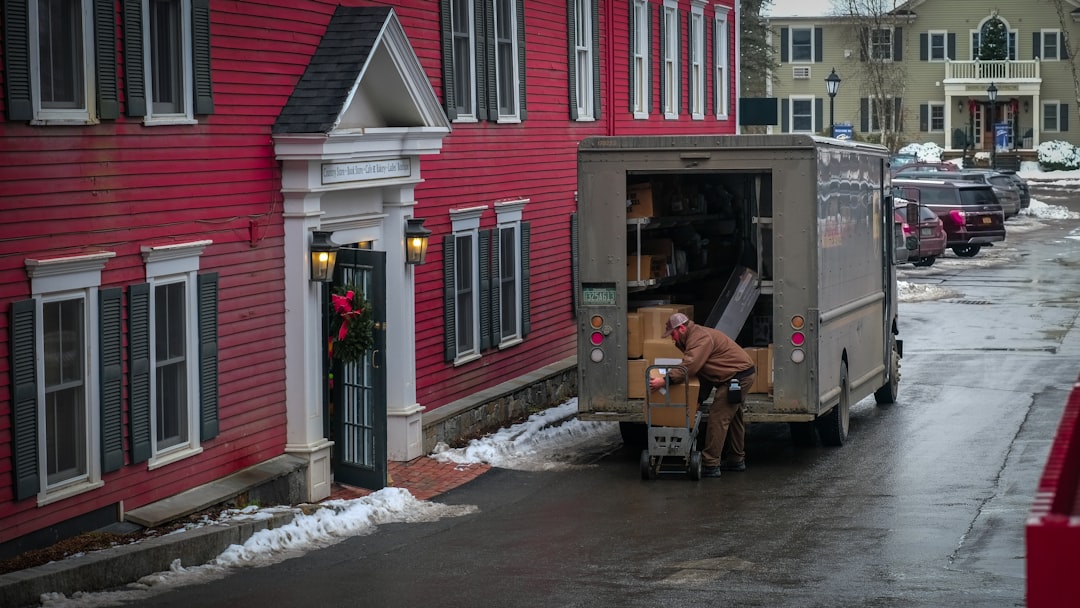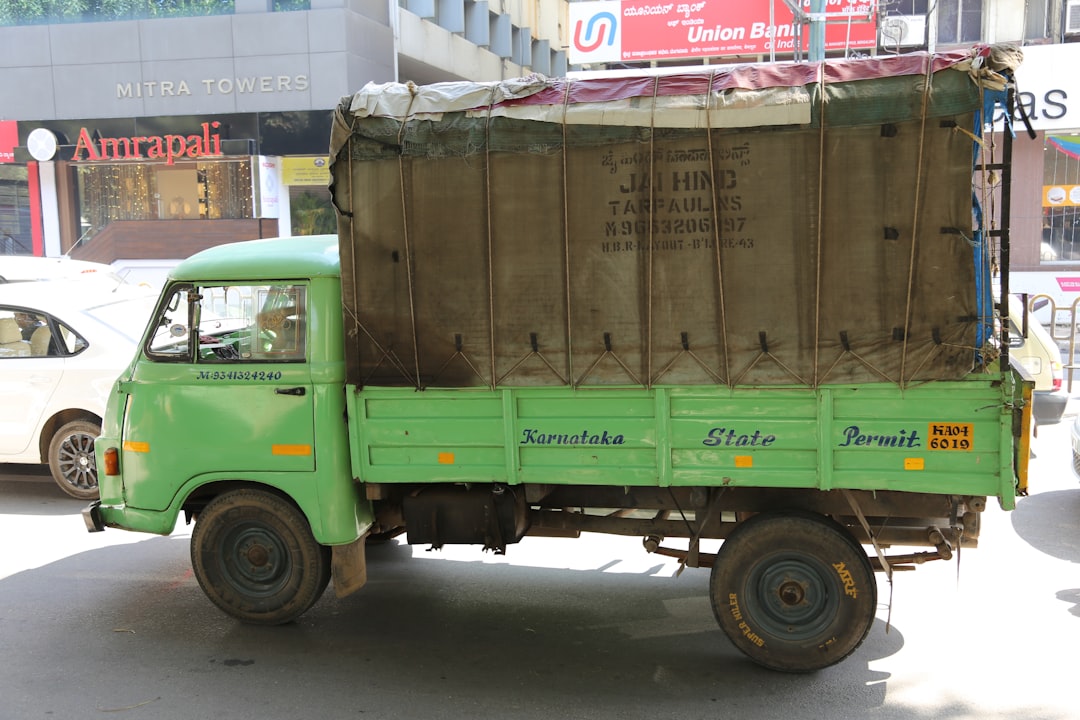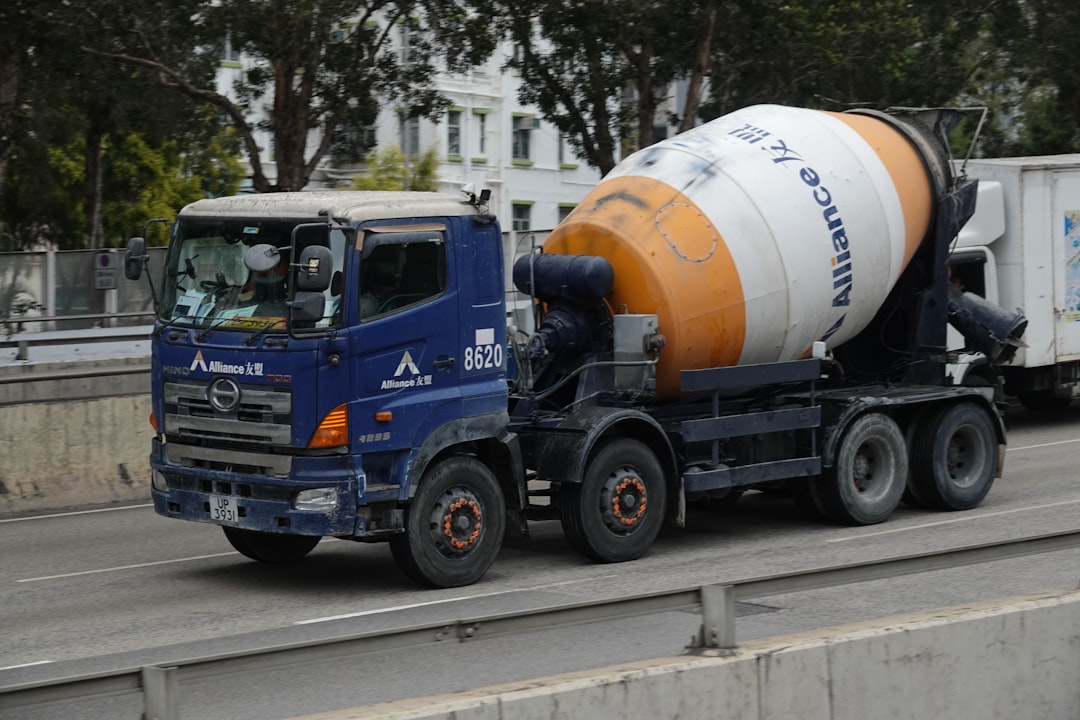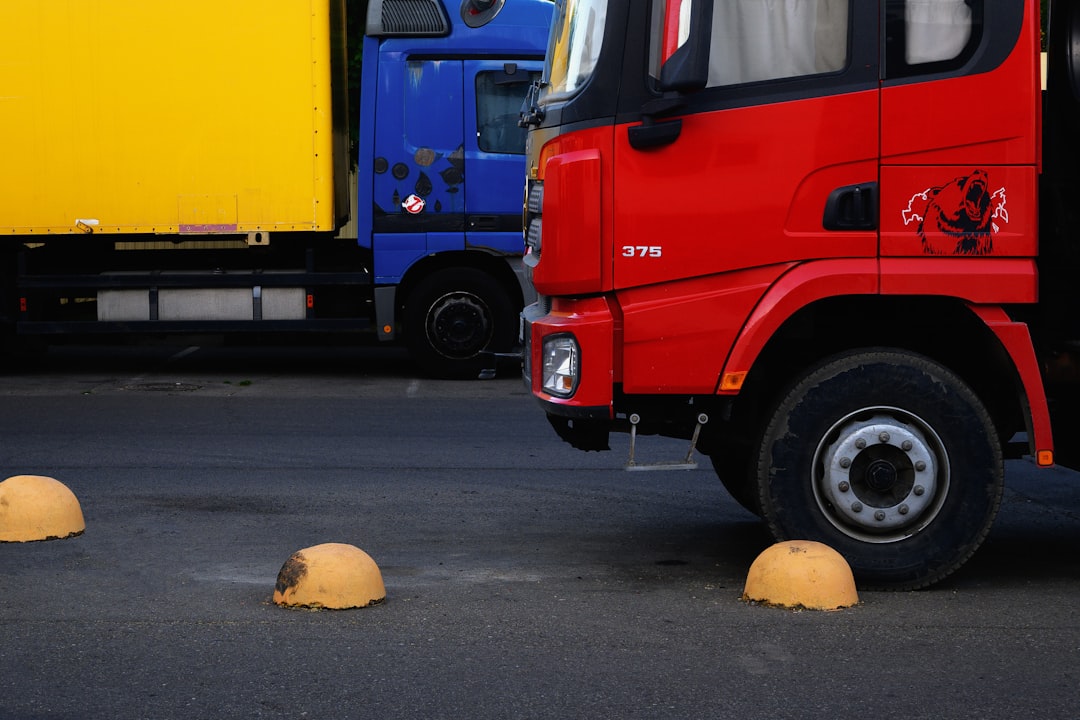

Engage prospects with a scan and streamline customer engagement with FREE QR code marketing tools by Sona – no strings attached!
Create a Free QR CodeFree consultation

No commitment

Engage prospects with a scan and streamline customer engagement with FREE QR code marketing tools by Sona – no strings attached!
Create a Free QR CodeFree consultation

No commitment
QR codes have shifted from novelty to essential tool for connecting offline engagement with online action in the concrete delivery industry. For concrete delivery services, QR codes enable smooth, efficient processes for delivery teams and clients without requiring dedicated apps or complicated setups.
Today’s construction landscape requires accurate tracking, transparent communication, and flawless scheduling. Concrete delivery providers often struggle with fragmented data, incomplete records of valuable prospects, and inefficient job site coordination. Outdated paperwork and phone-based communication slow projects, create costly delays, and lead to missed opportunities, especially when information about key delivery stakeholders is not captured.
By using QR codes, concrete delivery services can automate check-ins, enable real-time tracking, and give clients instant access to updates. This approach eliminates gaps caused by missing account data, improves workflows, and highlights valuable engagement that would otherwise be lost. The result is higher delivery efficiency and better customer experiences, allowing concrete providers to stand out as innovative partners for every kind of project.

Concrete delivery lives or dies by timing, coordination, and documentation. Missed check-ins, slow data entry, and limited insight into delivery milestones create downtime and miscommunication that ripple across a job site. QR codes bridge real-world actions to digital systems so that every arrival, pour, and sign-off is captured instantly and shared with the right people.
In many operations, paper manifests, radio calls, and ad hoc texts still carry the load. Analog processes lead to lost paperwork and inconsistent records. Replacing them with QR-enabled touchpoints gives teams a consistent, real-time source of truth. Drivers can scan to confirm milestones, foremen can scan to see ETAs, and clients can scan to access documentation or provide feedback, all without an app.
Moving from static forms and phone handoffs to QR-based workflows has an immediate impact on cycle time and accuracy. With platforms like Sona QR, you also gain scan analytics and user segmentation so that every code becomes both a tool for operations and a source of insights for process improvement and customer retention.

Concrete delivery operates in a high-stakes environment where even small delays carry outsized cost. Crews, pumps, and traffic patterns must align precisely. QR codes make it simple to connect the field to your digital operations in seconds, without additional hardware or software for end users.
You can turn any physical surface into a digital gateway that delivers the exact information a stakeholder needs in the moment. A foreman scanning a code on a gate can see a truck ETA and mix details. A driver scanning a code on a ticket can log a milestone. A client scanning an invoice can instantly submit feedback or a change order request. Each scan also leaves a data trail that powers analytics and proactive service.
When QR codes are placed on delivery tickets, receipts, or vehicle placards, both contractors and clients gain self-serve access to proof of delivery, time stamps, and documentation. Management gains a fuller picture of job site activity and engagement that would otherwise be invisible.
Not all QR codes are the same. Concrete delivery teams benefit from formats that match real operations and communications. Choosing the right type of code ensures that the scan leads to the right action.
QR codes can embed or link to many destinations, and dynamic QR codes allow you to swap destinations later without changing the printed code. For concrete delivery, the most useful formats focus on real-time information, secure contact sharing, compliance documents, and quick forms.
Dynamic QR codes are especially helpful for compliance documents and schedules. As project requirements evolve, a dynamic code can always point to a current set of instructions, updated MSDS sheets, or the latest site plan.

Growth stalls when you cannot track interactions, learn from them, or build on them. Concrete delivery teams interact with many stakeholders who may not be captured in your CRM, including site supervisors, subcontractors, inspectors, and property owners. QR codes give these people a simple way to engage while giving you the data to improve service and expand accounts.
Focus on placements that align with the physical flow of your operation. Think through the truck’s journey, the site’s entry points, the office’s handoffs, and the client’s paperwork. Each of these moments can host a QR code that enables access, captures intent, or accelerates communication.
Modern QR management platforms like Sona QR let you track scan volume, differentiate by placement, and see which channels drive repeat interactions. Use these insights to prioritize investments and uncover upsell opportunities based on real engagement.

The most effective QR programs map directly to everyday interactions. Start with a few high-value use cases that reduce friction and improve visibility, then expand. Below are common examples that fit concrete delivery operations and client workflows.
In each case, define the desired action and the data you want to capture. Decide whether the destination should be a live dashboard, a form, or a static resource. Then place the code where it will be easily noticed in the moment of need.
Adding QR codes to both physical and digital assets creates a continuous loop. Scans drive action, action creates data, and data feeds improvements in scheduling, service, and growth.
Every scan is a signal in a world where many stakeholders never fill out forms. If you treat scans as intent, you can segment audiences automatically by role, project stage, and behavior, then follow up with messages that match their needs. See Sona’s retargeting playbook for tactics.
Design codes for each moment in the journey. For example, an awareness code on a community billboard might promote a seasonal offer, while a conversion code on an invoice invites payment and a review. Role targeting is equally important. A superintendent, a homeowner, and a city inspector have different reasons to scan and different actions to take.
With Sona QR, you can create codes with unique identifiers, then use Sona.com to unify scan activity with web visits and campaign touches. The result is a retargeting framework that prioritizes real behavior instead of assumptions.
QR codes act as connectors across your operational and marketing channels. By placing them on materials that already circulate through the field, you make it easier for stakeholders to get answers, initiate requests, and share feedback, while you capture clean data for attribution.
A connected offline-to-online funnel in concrete delivery looks like this: someone scans a gate sign to check the ETA and is tagged as a site supervisor. That scan ties to a specific job and account. Later, the supervisor scans an invoice to submit feedback, generating a service ticket and updating account health. Each interaction is logged and measurable.
A centralized platform like Sona QR makes it possible to manage all these codes, monitor performance by placement, and sync scan data with your CRM. You will know which surfaces drive engagement and which audiences respond to which messages.
A systematic approach helps teams move from ad hoc usage to a consistent QR framework that supports operations and growth. Start small, validate what works, then scale across placements and regions with shared standards for design, tracking, and measurement.
The following steps are designed for concrete delivery teams that want to replace outdated workflows, improve customer experiences, and demonstrate measurable impact quickly. Each step includes practical considerations specific to job sites and delivery logistics.
Clarify the business outcome before you generate a single code. Pick a use case that solves a clear pain point and has a straightforward action for the scanner to take.
Choose between static and dynamic QR codes based on the need for updates and tracking. In most operational scenarios, dynamic is the better choice.
Make sure your codes are scannable in the environments where they will live. Consider lighting, distance, and motion.
Place codes where they will drive immediate value. Prioritize impact before you scale to every surface.
Treat your QR rollout as a living system. Monitor performance, learn from the data, and iterate.
Tracking scans is the first step. Understanding how scans contribute to delivery efficiency, customer satisfaction, and revenue is what earns QR a permanent place in your operation. Analytics help you pinpoint where delays occur, which teams engage consistently, and which accounts are most active.
For concrete providers, the ability to tie field interactions back to accounts and projects is transformative. Scans at the gate, on a ticket, or on an invoice can enrich CRM records automatically. You can see which contractors engage most, which jobs require extra support, and where to target retention or upsell campaigns.
When you unify fragmented touchpoints across buying stages, you build a complete picture from first scan to conversion. That visibility enables smarter resource allocation, faster issue resolution, and better growth strategies.
Maximize the impact of QR programs by aligning them with the realities of job sites and delivery schedules. Success depends on consistent design, purposeful placement, and strong follow-through that turns scan intent into action and value.
Educate both employees and customers on why to scan. When people understand that scanning gives them immediate answers or reduces paperwork, participation increases. Shorten paths to value and automate the next step wherever possible.
Creative deployment examples include a QR code on the truck’s placard that switches from morning route to afternoon documentation, and a seasonal direct-mail postcard to contractors that links to a curing time calculator and book-now form.
Industry leaders increasingly treat QR workflows as core to their service model. The difference shows up in fewer missed milestones, faster responses, and better client satisfaction. Comparing providers reveals patterns you can adopt to raise your own bar.
Leaders standardize QR usage across tickets, trucks, and sites. They establish consistent calls to action, maintain dynamic destinations for real-time updates, and integrate with their CRM to ensure every scan contributes to account visibility and pipeline health.
By benchmarking against these capabilities, you can identify gaps and build a roadmap for QR-led improvements that produce measurable results.

Consider a large commercial project that implemented QR-enabled scheduling and delivery confirmation. By placing dynamic codes on tickets, gate signs, and staging areas, the team reduced phone-based coordination, improved on-time arrivals, and cut handoff errors. Survey participation increased when invoices used QR links to short mobile forms, providing actionable insight on crew performance and site conditions.
Environmental benefits are real as well. Digitizing manifests, safety sheets, and proof of delivery reduces paper waste and makes it easier to comply with documentation requirements. Clients pursuing LEED or similar standards value partners who provide instant access to digital records that support environmentally responsible practices.
Industry experts point to QR adoption as a hallmark of digital transformation on the job site. The combination of app-free access, dynamic content management, and integrated analytics elevates the standard of service. Providers who invest in these capabilities can differentiate in bids, demonstrate operational maturity, and foster long-term partnerships with general contractors and property owners.
QR codes are far more than convenience stickers. They are a strategy for turning every physical surface in your operation into a digital entry point and every moment of interest into a measurable action. For concrete delivery services, this means shorter cycles, fewer errors, and clearer communication that scales across crews and sites.
Here is what QR codes deliver when implemented thoughtfully:
Modern concrete delivery depends on digital tools that improve efficiency and decision-making. QR codes connect physical workflows to digital systems and analytics, delivering instant access and continuous improvement. With Sona QR, you can start creating QR codes for free, then use Sona.com to connect scans to revenue and elevate QR from a helpful tool to a strategic growth engine.
QR codes have revolutionized concrete delivery services by transforming traditional delivery tracking and communication into seamless, real-time interactions. They not only streamline order verification and delivery accuracy but also enhance customer satisfaction by providing instant access to delivery details and documentation. Imagine effortlessly ensuring every delivery is tracked, verified, and communicated without delays or errors.
With Sona QR, you can create dynamic, trackable QR codes that update instantly—no need to reprint materials—empowering your team to manage deliveries efficiently and your customers to access vital information on demand. Every scan becomes a data point that helps you optimize operations and build stronger customer relationships.
Start for free with Sona QR today and turn every concrete delivery into a transparent, reliable, and value-driven experience.
QR codes improve concrete delivery services by automating check-ins, enabling real-time tracking, digitizing critical documents, and providing instant access to updates for drivers, foremen, and clients without needing dedicated apps.
Using QR codes in concrete delivery enhances delivery efficiency, reduces paperwork and communication delays, improves workflow accuracy, provides real-time updates, enables seamless client feedback, and generates actionable data for process improvement.
A cloud-based concrete delivery app integrates QR code scans with CRM and delivery management software to update job statuses, attach proof of delivery, trigger notifications, and provide real-time scheduling and tracking accessible from any device without requiring app downloads.
Key features include automated milestone confirmations via QR scans, real-time delivery tracking, digitized documentation access, integration with CRM systems, customer feedback collection, and analytics for optimizing delivery workflows and customer engagement.
Concrete contractors can streamline delivery by adopting QR code workflows that replace paper forms and phone calls, digitize documents, automate check-ins, provide instant access to schedules and safety information, and integrate scan data with their CRM for improved coordination and customer service.
Use Sona QR's trackable codes to improve customer acquisition and engagement today.
Create Your FREE Trackable QR Code in SecondsJoin results-focused teams combining Sona Platform automation with advanced Google Ads strategies to scale lead generation

Connect your existing CRM

Free Account Enrichment

No setup fees
No commitment required

Free consultation

Get a custom Google Ads roadmap for your business






Launch campaigns that generate qualified leads in 30 days or less.
